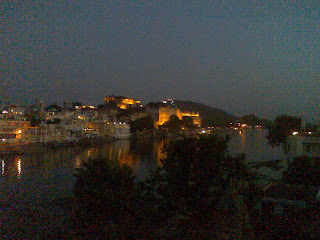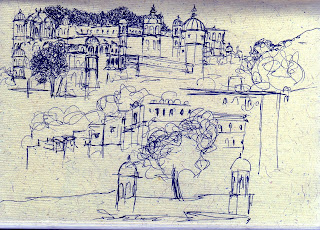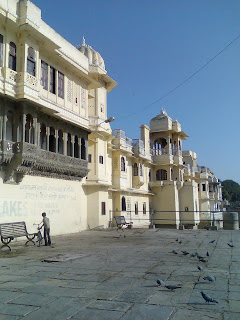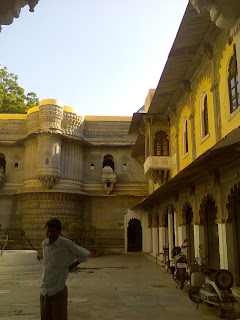








He laid his mittens on his knees, unbuttoned his coat, untied the tapes of his face cloth, stiff with cold, folded it several times over, and put it away in his pants pocket. Then he reached for the hunk of bread, wrapped in a piece of cloth, and, holding the cloth at chest level so that not a crumb should fall to the ground, began to nibble and chew at the bread.The bread, which he had carried under two garments, had been warmed by his body. The frost hadn’t got it yet.
More than once during his life in the camps, Shukhov had recalled the way they used to eat in his village: whole pots full of potatoes, pans of oatmeal, and, in the early days, big chunks of meat. And milk enough to bust their guts. That wasn’t the way to eat, he learned in the camp. You had to eat with all your mind on the food-like now, nibbling the bread bit by bit, working the crumbs up into a paste with your tongue and sucking it into your cheeks. And how good it tasted-that soggy black bread! What had he eaten for eight, no, more than eight years? Next to nothing. But how much work had he done? Ah!!
I have been reading the writings of Alexander Solzhenitsyn over the past few months,and have been quite engaged with the way he describes the human condition and explores the very nature of survival in his works.The way Solzhenitsyn describes his protagonist Shukhov,the absolute necessity of a piece of black bread just for mere survival and the absolute fruitlessness that he then sees in the extravagance of living,makes me draw comparisons with the works of Somnath Hore(an artist I hold in very high regard).
Recently, I spoke to a few art students about the commonality shared between the starving farmer in the drawings of Hore and the overworked camp prisoner in the novel of Solzhenitsyn…. both exist from one minute to another…for both of them,survival is of primeval importance and yet,they both do not know what the next minute might bring….
I feel that the practice of art making is not very far removed from the above condition. Two of my colleagues recently came to my studio and we had an interesting debate on how the feeling of fulfillment as an artist can sometimes be the death of the creative process….by this I do not mean that one needs to wallow in feelings of inadequacy to make good art….
"I believe that one should be able to control and manipulate experiences,even the most terrifying-like madness,being tortured,this kind of experience-and one should be able to manipulate these experiences with an informed and intelligent mind.I think that personal experience shouldn’t be a kind of shut box and mirror looking narcissistic experience.I believe it should be generally relevant.”
Sonatina Mendes
Yoon Dooree, born in Pusan, South Korea in 1928. Yoon, a fifteen years old girl was picked up from near her home by Japanese soldiers. She became a sex slave for Japanese soldiers during the Second World War. Yoon had been living in Woolsan, near her hometown since she was released from the Japanese military camp. She never had gone back to her hometown.
She had isolated herself from her family, friends, relatives and everybody whomever she knew. There was nobody to carry out the funeral when she died a few months ago.
I still remember, so clearly, what she had said in an interview: “I am not willing to accept compensation because money has no meaning at this stage of my life. But I will fight for an apology from the Japanese government”.
Painted by one of the victims
The cherry blossom symbolises Japan.
It is also eloquent about the myth that the tree sucks blood from deaths and blossoms in red.
Kim Kyoungae
One of the challenges I face with painting is where to elaborate and where to conceal. Conversations of late with friends have often ended up with discussing ancient chinese art. The artists from those times had supreme command over the choices they made while either concealing certain elements or revealing others. When they revealed, they opened up the world; and when they concealed, they invited the viewer to open up the world!
As a graduate student, I remember spending a great deal of time looking at chinese paintings and japanese woodcuts. The high-point was an exhibition of original woodcut prints portraying Kabuki actors that was brought to the galleries of Chitrakala Parishath in Bangalore. Here's an image that triggered my memory bank.
 Malavika Rajnarayan
Malavika Rajnarayan
